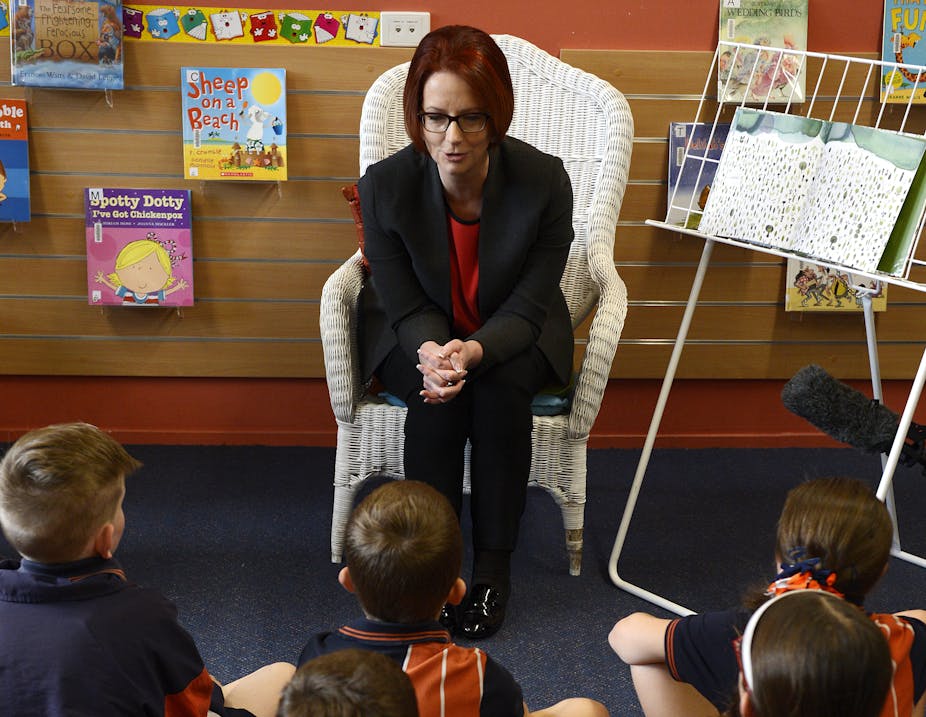The Australian Education Bill, introduced to the parliament last week, sets out the government’s Gonski reforms to school funding.
One of the reform’s key tenets is that extra money should go to schools with the greater number of disadvantaged students, including Indigenous students, those with a disability, and those from poor backgrounds.
But why should this funding principle only serve students in primary and high schools?
The government should apply the logic of the school reforms to higher education funding and allow universities to properly meet the needs of the students they enrol.
How it works now
At the moment, university base funding is driven by the disciplines students choose to do. This means some disciplines attract around A$11,000 while others get nearly $31,000.
Under the school funding reforms, there is one base amount set for each primary school student ($9,271) and one for each high school student ($12,193). This means the secondary school base funding rate is higher than university rate for humanities, law and business, which covers just under one quarter of university students’ units.
For schools, this base amount will be boosted with six “disadvantage loadings”. The first is for students with a disability. The Bill is silent on the size of the loading which is to be set by regulation. For Higher Education, the Disability Support Program funding is about 1% of average base revenue per student with a disability (around $160), due to most activity being concentrated at a few high need students.
The second is a loading for each Aboriginal and Torres Strait Islander student. For schools this ranges from just over 20% for a school with very few such students up to 120% where all students are Aboriginal or Torres Strait Islanders. In contrast, the Higher Education Indigenous Support Program funding for each Aboriginal and Torres Strait Islander student equals about an extra $3,200 per student or 19% of average base revenue per student.
The third school loading is for students from the lowest or second lowest socio-economic quartiles. For students in the lowest quartile, the loading ranges from just over 15% for a school with very few such students up to 50% where 75% or more students are from that lowest SES quartile. For students in the second lowest quartile, the loading ranges from just over 7.5% for a school with very few such students up to 37.5% where 75% or more students are from that second lowest SES quartile.
Higher education funding looks at the lowest socio-economic quartile only, despite the considerable under representation in the second lowest. The higher education low SES loading is set at $1,400, or a bit under 10% of average base revenue per student. Universities do not have, nor are likely to have, the large concentration of low-SES that primary and secondary schools in low SES areas will have, hence a sliding scale makes less sense. However, lack of recognition of the second lower quartile risks neglect of students from such areas.
The fourth school loading is for students with low English proficiency set at 10% of base funding for each such student. There is no equivalent allowance in higher education.
Fifth and sixth loadings are for location and size. Using complex calculations, these loadings mean a small remote school gains more than a larger remote school. Regional loadings for higher education also involve complex calculations based on a sliding scale for individual campuses based on their student cohort size and location, and a 50% loading for distance students, and excluding very small campuses.
In combination, the loadings make the funding intended for each school potentially much larger than the starting base amount, particularly where many children in the school generate one or more of the loadings. This makes clear that school funding is on a par with university funding for many disciplines outside of the particular high cost of health and agricultural units.
University responsibility
The school bill combines the base and loadings to determine the funding a school ought to receive. It does not seek to track the use of each loading, allowing a school to use the funds available as and where its needed.
With the funds distributed to give each student a reasonable prospect of a good education, the aim is to create better, and more evenly spread, education outcomes.
But the contrast with higher education funding is stark. While the regional loading is integrated with base funding, the schemes for students with a disability, for those from low-socio economic background and for Aboriginal and Torres Strait Islanders are separately allocated and accounted for, including requirements for evidence of expenditure distinct from use of base funding.
In response to accusations of excessive red tape, the government recently announced an inquiry to lessen universities’ reporting burden. In this it has proposed excluding university research block grants from the acquittal process. And yet, when it comes to equity programs there is no sign of a similar exclusion.
But change is needed if the higher education sector is to cater to an increasing diversity of students and student needs. The good news is, the government only has to look over the school fence.

